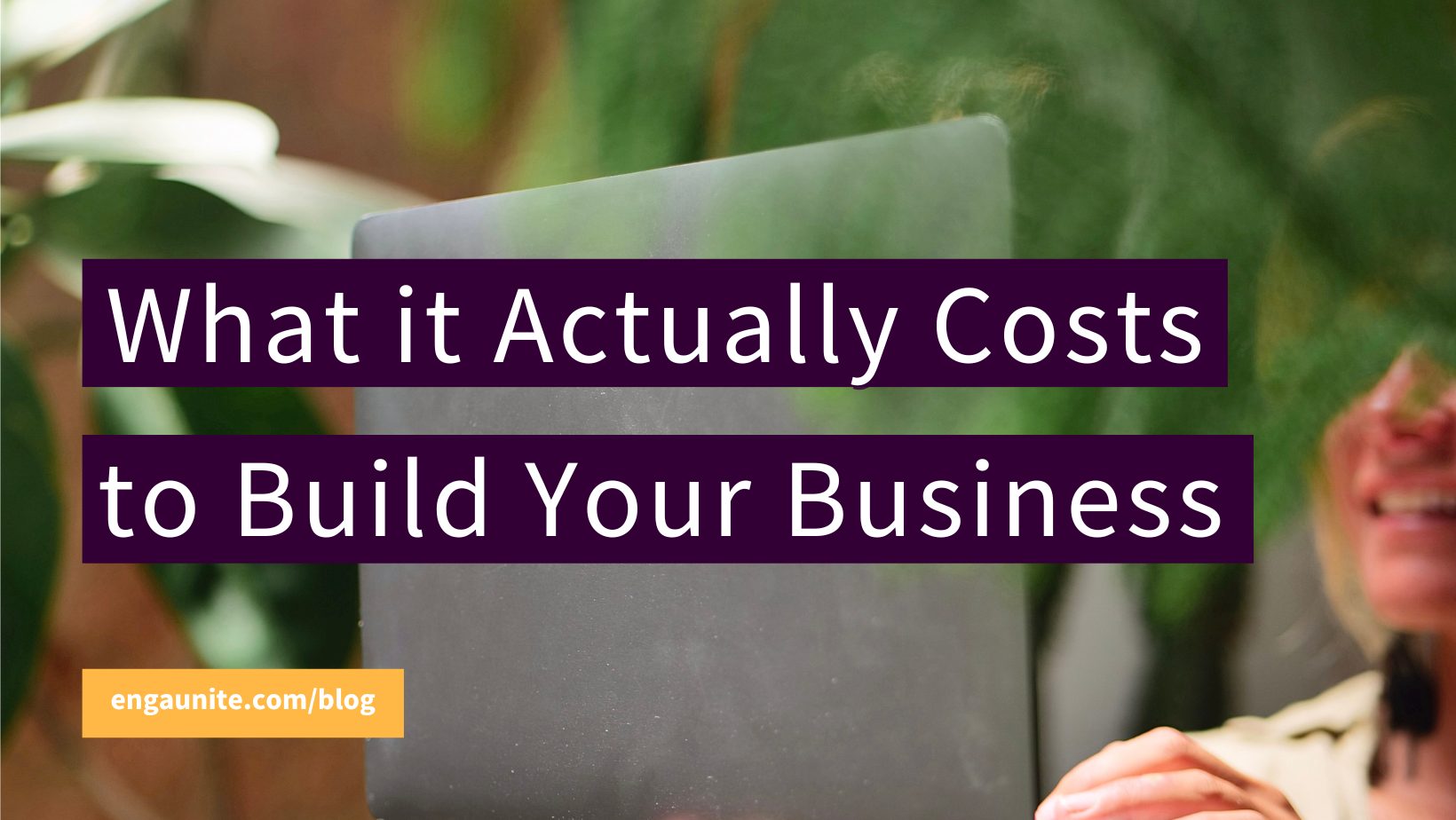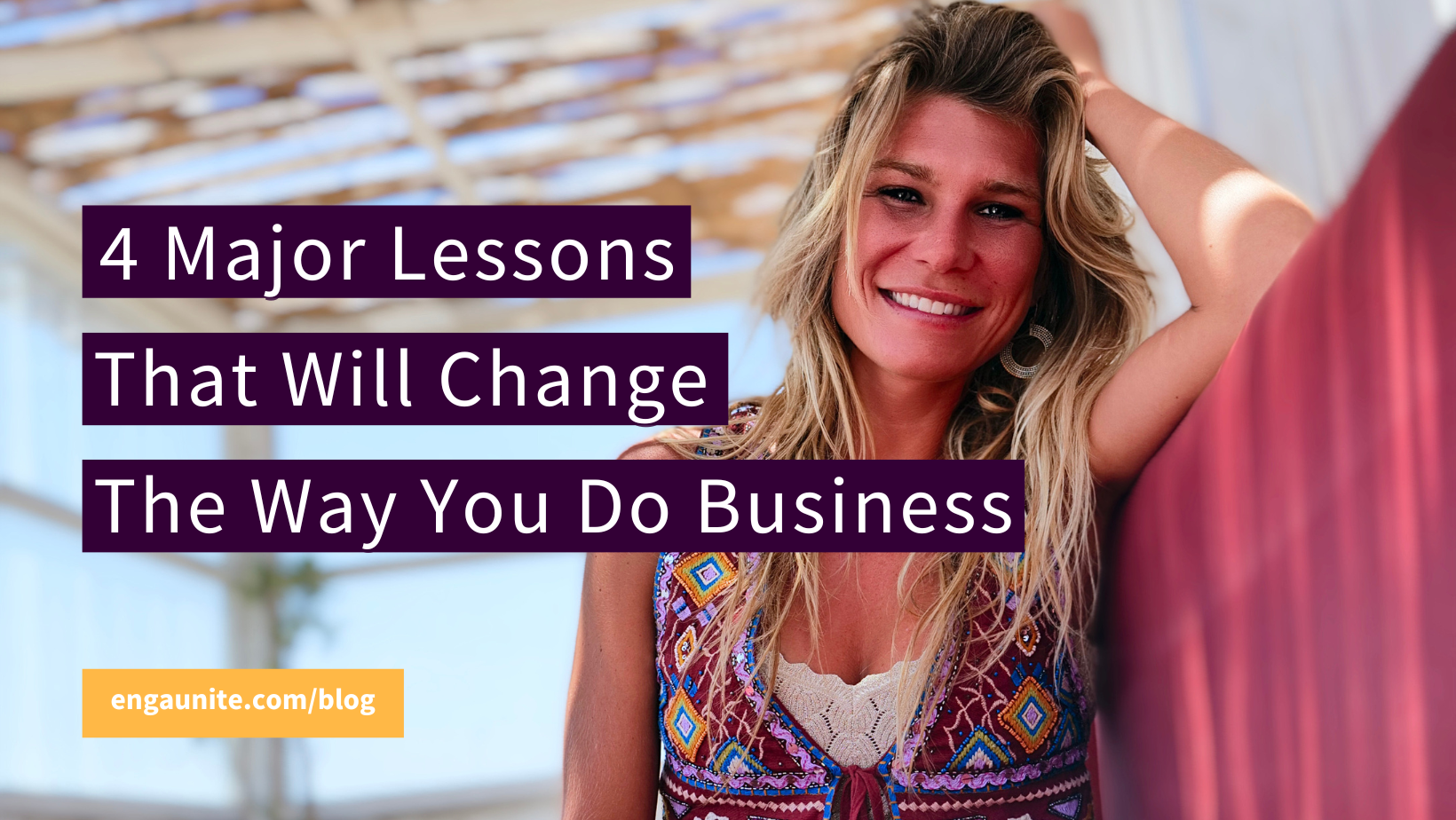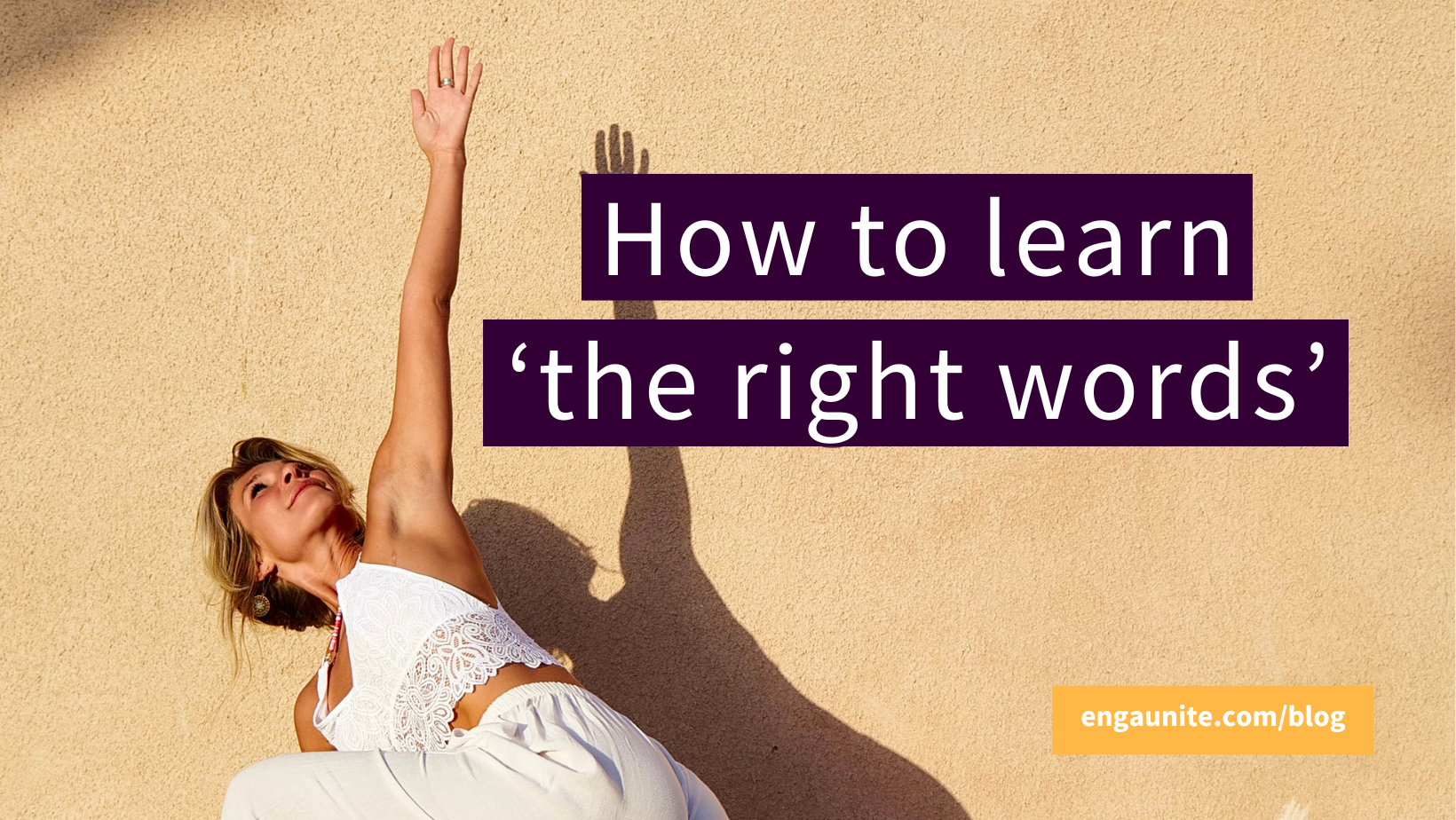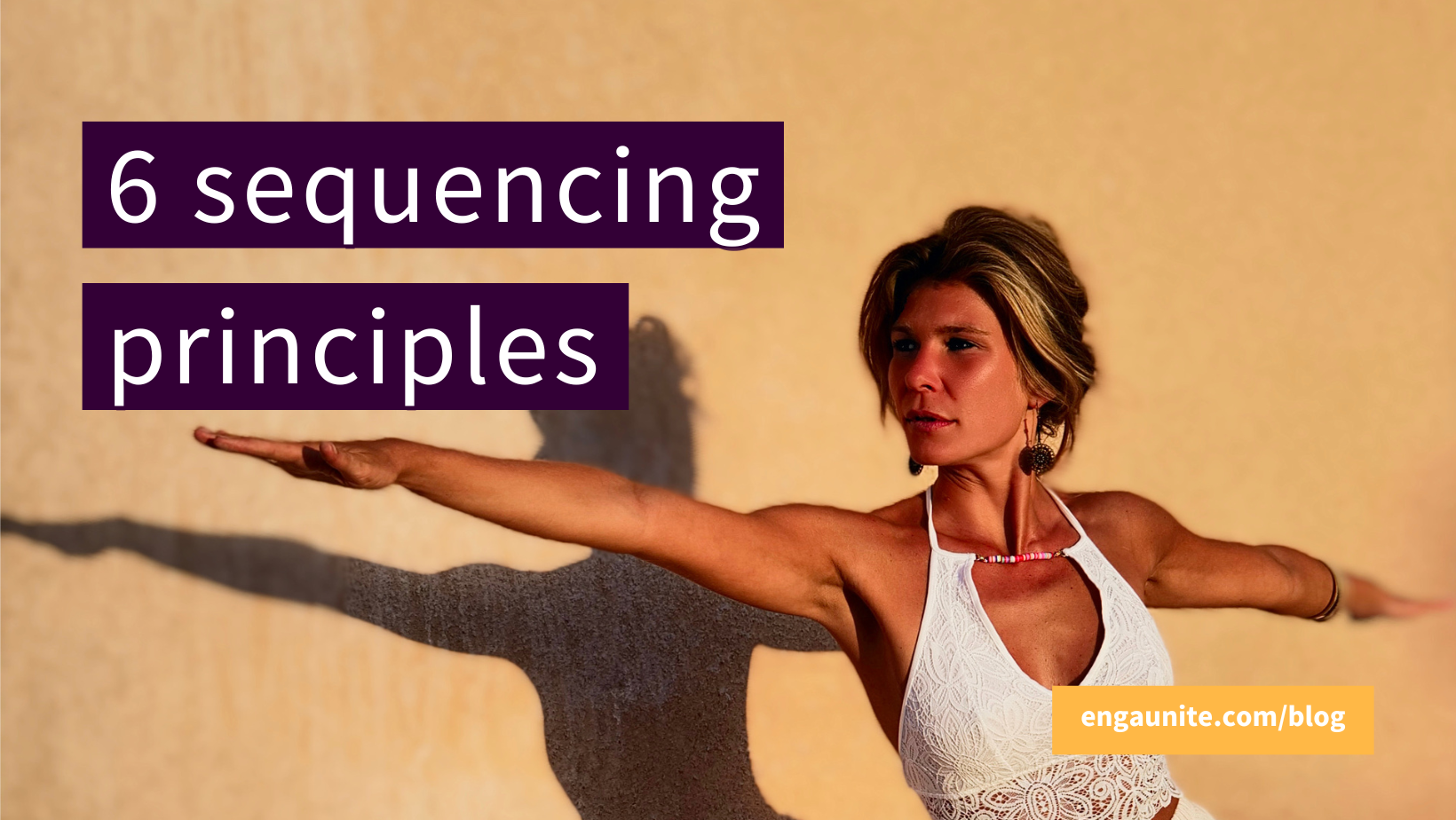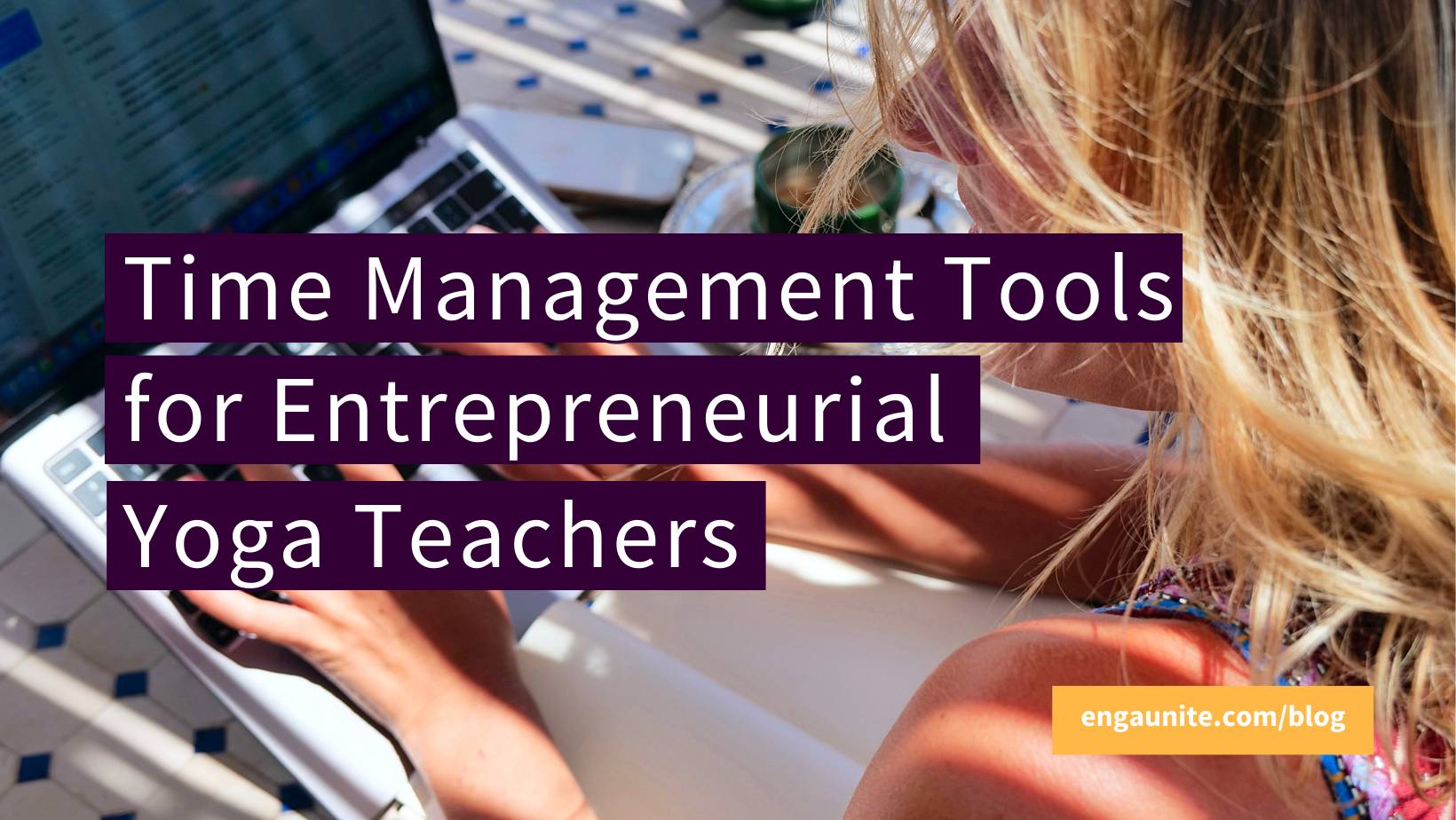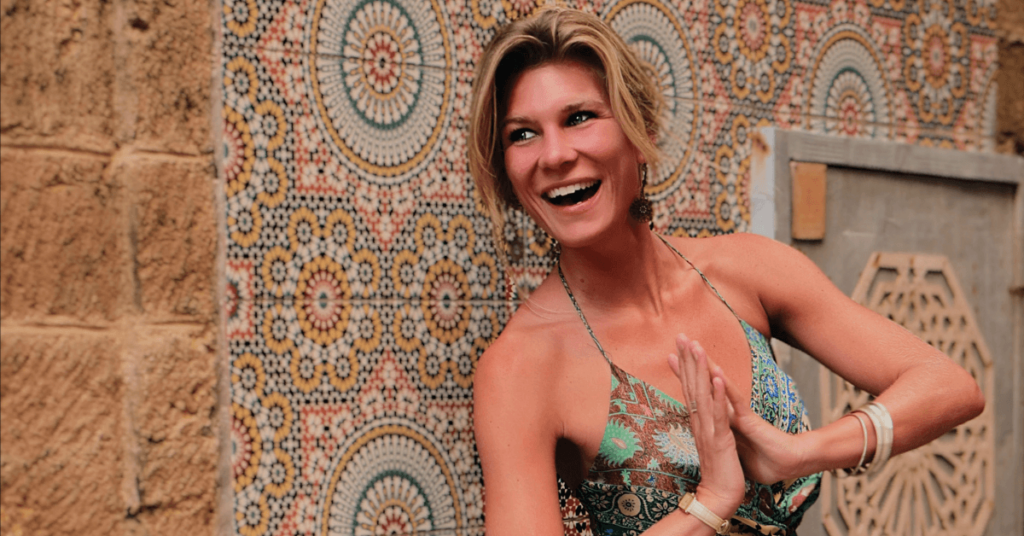Working with my coaching clients, I often hear two incorrect statements; ‘Building a business is expensive!’ or ‘To build my business, I need a loan or investor.’ I don’t want to neglect that depending on the type of business you want to build there may be some expenses. For example, if open a local studio, you may have to pay rent and buy equipment. However, the majority of our community members are considering an online business. They want to serve a bigger audience, gain financial stability and obtain the freedom to travel and teach wherever they like. If that’s your case too, stay with me! In this blog I’ll explain what it actually costs to build your business!
So, let’s come back to those statements ‘Building a business is expensive!’ or ‘To build my business, I need a loan or investor.’. These statements raise two questions: what do you need a lean for? And have you actually looked into what you need?
From my experience building an online business consisting out of an online learning platform with 12+ self-paced courses, 2 coaching programmes, blog, podcast and 5K community which is growing by the day, I can tell you that these beliefs are false.
Building a business is an investment in your future, wellbeing, sense of purpose and fulfilment. If you still believe that building a business is a monetary investment, I invite you to redefine the word investment.
Redefine the word investment!
When you’re starting out, it’s natural to feel uncertain about the investments needed to thrive. You may not know where you start. You may overthink the cost of building and hosting your website, using an email software, or needing equipment like a mic, camera and light to record your classes.
Lack of clarity on your investments may hold you back or make you fear that it takes a long time to pay off. Chances are you push your dream to build your career and business forward based on false beliefs on what it costs… Instead of having these fears, insecurities or lack of knowledge take over – I want to help you understand the true cost of embarking on your entrepreneurial path.
It’s the key that unlocks the door to confidently pursuing your purpose in the wellness world.
The investments I made in my first business year
Let me reveal what will probably come as a surprise… My monetary investments during my first business year were $0!
To write my courses, build online presence and record learning materials (video and audio) I already had everything I needed. And most of you do too! If you have a laptop or a phone with a working camera and mic and wifi – you’re golden.
For project management and software integration I signed up for free versions only.
- Canva to create social media posts and course materials.
- Calendly (online calendar) to have my clients book their sessions.
- MailerLite to collect and nurture my email subscribers.
- iMovie (which is a free editing software for Mac) to edit videos.
- Asana for project management. (I’d now suggest to use ClickUp)
As you see now, when you’re starting out, building online services doesn’t have to cost you anything. It’s about understanding what you truly need, doing research and finding creative ways to save money!
Remember I said you need to redefine the word ‘investment’? Let’s have a look at what I mean by that!
What it actually costs to build a business!
Let’s be honest, because building a business comes with a cost. As yoga teachers and wellness enthusiasts you may be familiar with the Yamas and Niyamas. They are ethics by which we live (and I strongly suggest to apply these to the way you do business too). But for now, let’s look at the Yama: Bramacharya.
If I were to give Bramacharya a one sentence definition it would be to ‘spend your energy wisely’. Energy is spent on our thoughts, emotions, and daily activities. This can include
- how we manage time
- the tasks and activities we choose to engage in
- your learnings; personal and professional development
- how and with whom we interact
- what we consume — nutrition, news, media and social media
The reason I bring these things up is because energy is an investment! Especially in the beginning, energy is the actual cost of building your business. So, let’s dive a little deeper in your investments when building purpose-driven career:
Time invesments
This can include the hours you spend on learning, planning, and executing.
On a day to day basis investing time can be
- Admin tasks: replying to emails, private messages or scheduling your social media content
- Creation: designing your social media posts, or creating blogs or podcasts or writing your writing outlines for your classes and sessions.
- Building community: authentic connection with your community members, building and nurturing your relationships, and offering resources and support.
- Networking: interacting with people and organisations you love to set up partnerships and collaborations.
- Learning: listening to podcasts, reading books, attending events and possibly joining courses or working with a coach which can be free or paid options.
In terms of your projects think of:
- Consciously managing excitement: before diving in without structure and clarity, build a plan or strategy to make your projects come to live.
- Project management: planning, managing different tasks, allowing your to-do lists to pile up and remembering that not everything needs to happen today, this week or this month.
And if you’re building a multilingual business also think of creating multilingual content to resonate with diverse audiences, or market research to culturally sensitive advertising strategies.
Mindset investment
The way you do anything is the way you do everything. As a wellness enthusiast, you’ll probably be familiar with this phrase. What it means is this context is that how you prioritise your personal mental health reflect the way you show up in your business.
Investing in your mindset and mental health is key. As a business owner you’re no longer ‘just a teacher, guide, or mentor’. You take on several roles and tasks that may be new to you. Therefore, you need to invest in the tools and practices that help you stay positive, adaptable, and open to learning. Think of investing in overcoming obstacles like Fear of Failure, Impostor Syndrome, Perfectionism, Scarcity Mindset, Fear of Rejection, Comfort Zone Resistance, Lack of Self-Belief. All of these concepts are very very common among new, but also well-known business owners. Ask any successful entrepreneur about the ingredients to their success and I can already tell you that investing in their mindset is one of them.
Investing time and energy in overcoming fears and limiting beliefs, and maintaining mental health could look like:
- Embracing challenges as opportunities for personal and professional growth.
- Remaining open-minded to diverse beliefs and practices while staying true to your teaching style.
- Seeing your setbacks as set-ups instead and not letting rejections or obstacles make you stop.
- Practising postive affirmations, shifting from scarcity to abundance, and daring yourself to do things that feel scary or uncomfortable. Fear is courage becoming known
- Prioritising your practices (yoga, meditation, journaling or activities to recharge and prevent burnout. To fuel your energy, stay inspired and motivated building your international career.
Personal & professional growth
Building a business is not just about your career growth but your personal evolution. I already mentioned that prioritising your mental health reflects the way you show up. But also remember that in you’re business, you’re the same person as who you are in your daily life. Your tasks and responsibilities will be different. Your values and boundaries will show up differently. The way you apply skills and knowledge may be different, but you’re still the same person!
Managing investing energy in your development could be to
- Invest in learning new business tools and finding ways to optimise your project management and marketing strategies.
- Focusing on one task at the time to not get overwhelmed
- Attending webinars, workshops or courses, but only take only what you need right now and later come back when you’re ready to learn and absorb more.
- Enhancing your skills and knowledge as a teacher, guide, or coach to gain experience, build confidence, improve your expertise, stay updated and offer enriched experiences.
- Surrounding yourself with like-minded individuals that inspire, support and hold you accountable and give you feedback.
Resources and technology investments
I already mentioned that most of the equipment you need to start building your business, you most likely have. When it comes to investing in resources and technology, I also mentioned that most softwares or digital tools offer a free version which are excellent for when you’re starting out.
Except from Canva, MailerLite, Calendly, iMovie or Asana, also think of Google meet for your live sessions or ChatGPT for your written content creation.
Your international career is closer than you think!
Your entrepreneurial journey only feels far away if you keep seeing it that way! You see now that investments in equipment and softwares shouldn’t hold you back! Building a business requires dedication, resilience and an open mind to learning and development. It’s an investment in your future, wellbeing, sense of purpose and fulfilment.
If you’re ready to learn more and would like to invest in your education, to find structure, clarity, receive the tools, methods and strategies and feel supported building your very own purpose-driven business. I’d love to mention a few of the ways in which you can work with me:
>>> Build Your Business – 4-Day Immersion
Carve out your career path and establish a business model that suits your energy levels and ideal lifestyle. Make an informed decision on your language of operation and find out what types of products suit you and your clientele. Replace overwhelm with excitement getting to serve your students in your way.
>>> Launch & Expand Your International Career
In this 6 month programme you’ll receive the support to learn the skills and systems to feel capable, focussed, and connected on your entrepreneurial journey. From content writing, to attracting the right clients, creating your products and selling them with success. In this programme you’ll expand your network of global wellpreneurs and learn the structure and strategies to build and expand your international business.
In both programmes I offer hands-on guidance, personalised guidance. It’s where I can directly provide you with constructive feedback, new ideas and eye opening insights. I’m committed to seeing you grow and experience success. To make you feel you know what you’re doing and offer reminders you of what you’re doing it for! Here you have my full support and accountability.
Want to know What Type of Business Suits You?
>>> Take the quiz to find out!

